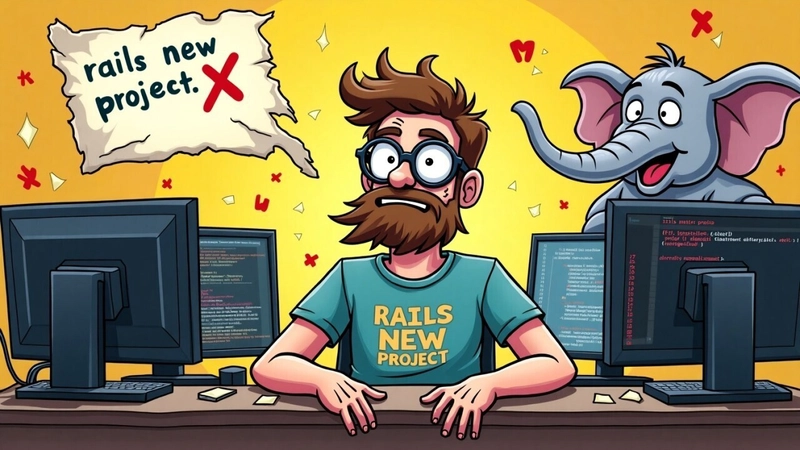March 17, 2025
Have you ever created a new Rails project only to realize you forgot to add a crucial parameter at the beginning? We’ve all been there! The rails new command is the first step when starting a new project, and making the right choices from the start can save you a lot of time and effort down the road.
Do you want to start a new Rails project from scratch and don’t know how? Get in touch  https://rubystacknews.com/get-in-touch/
https://rubystacknews.com/get-in-touch/
Understanding rails new
When you run rails new, you can specify multiple options to customize your project setup. These options help define the database, skip unnecessary files, and tailor the project to your specific needs.
To see all available options, you can run:
rails new --help
Commonly Used Parameters
1. Choosing the Database
By default, Rails uses SQLite, but you can specify another database:
rails new my_app -d postgresql
Other supported databases include MySQL, Oracle, SQL Server, and more.
2. Skipping Unnecessary Features
You can skip certain features if you don’t need them:
rails new my_app --skip-action-mailer --skip-active-storage --skip-test
Other options include:
- –skip-action-mailbox: Skip Action Mailbox.
- –skip-action-text: Skip Action Text.
- –skip-active-record: Skip Active Record (no database).
- –skip-active-job: Skip Active Job.
- –skip-action-cable: Skip Action Cable.
- –skip-sprockets: Skip Sprockets (asset pipeline).
- –skip-spring: Don’t install Spring.
- –skip-turbolinks: Skip Turbolinks.
- –skip-bootsnap: Skip Bootsnap.
3. API-Only Mode
If you’re building an API, you can create a lightweight project:
rails new my_api --api
This removes unnecessary middleware and views.
4. JavaScript and CSS Choices
Rails supports different JavaScript and CSS frameworks:
rails new my_app -j esbuild --css tailwind
- –javascript=[importmap|webpack|esbuild|rollup]: Choose JavaScript bundler.
- –css=[tailwind|bootstrap|bulma|postcss|sass|none]: Choose a CSS framework.
5. Skipping Git Initialization
If you don’t want Rails to initialize a Git repository automatically:
rails new my_app --skip-git
6. Skipping Bundle Install
If you want to install gems later:
rails new my_app --skip-bundle
7. Using Edge Rails
To use the latest Rails version from GitHub:
rails new my_app --edge
8. Forcing Overwrite
If the directory for your app already exists, you can overwrite it:
rails new my_app --force
9. Custom Templates
Use a custom application template to generate your app:
rails new my_app -m path/to/template.rb
10. Docker Support (Experimental)
Generate a Rails app with Docker support:
rails new my_app --docker
What If You Forget a Parameter?
If you forgot to add a parameter, you don’t need to start over! Here’s how to adjust your project after creation:
- Change Database: Update config/database.yml and install the necessary gems.
- Add Missing Gems: Manually add the required gems to your Gemfile and run bundle install.
- Enable Features: If you skipped something like Action Mailer, you can generate missing files using Rails generators.
Need Expert Ruby on Rails Developers to Elevate Your Project?

Need Expert Ruby on Rails Developers to Elevate Your Project?
Full Example of a Custom Rails Setup
rails new my_api \
--api \
-d postgresql \
-j esbuild \
--css tailwind \
--skip-test \
--skip-active-storage \
--skip-action-mailer \
--skip-git
This creates:
- An API-only app.
- Uses PostgreSQL as the database.
- Configures ESBuild for JavaScript.
- Uses Tailwind CSS for styling.
- Skips unnecessary features (tests, Active Storage, Action Mailer).
- Does not initialize a Git repository.
Final Thoughts
The rails new command is your first step in building a great application. Taking the time to customize it properly can make a huge difference. Next time you start a Rails project, double-check your parameters to ensure a smooth setup!
Have you ever forgotten an important parameter when creating a Rails project? Share your experiences in the comments! 







Top comments (0)